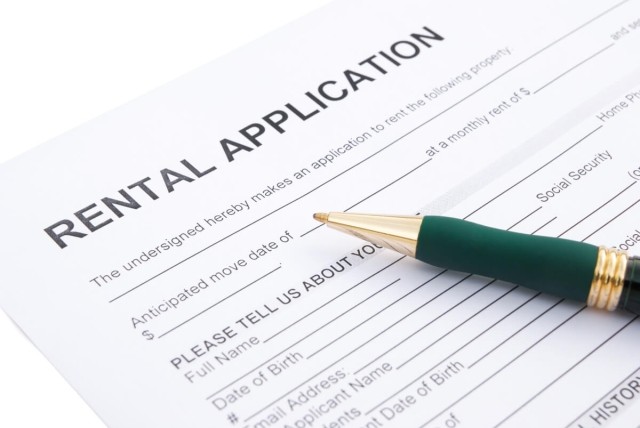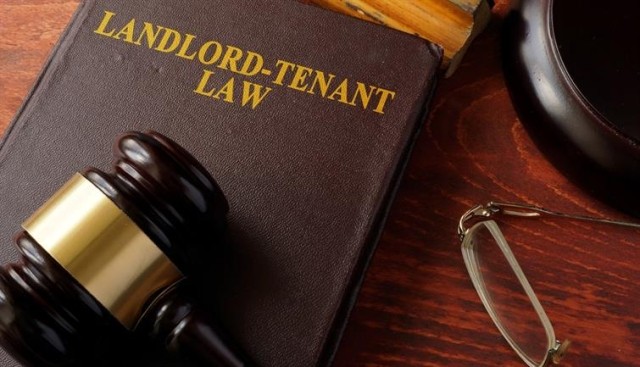Whether this is your first rental or you’re a seasoned renter, residential leases can be confusing. They’re often packed with legal jargon that is difficult to read, leading to many questions. Should you read the lease completely? Why are some leases longer than others? What do you do if you see something questionable in the lease? With almost 37 percent of the United States’ population renting a home, you are certainly not alone. If you’re one of the 121,520,180 renters signing a lease, you may need some help deciphering your rental lease before you sign.
What Is an Apartment Lease Agreement?
The first step to understanding your lease is knowing what a lease is. A lease is a written contract outlining terms that both the tenant, you, and the real estate owner, the landlord or property manager, agree to. Once you and your landlord sign the lease, you are legally bound to it, which is why it’s important to understand what you’re signing before you sign it.
Residential leases can look different and have different clauses in them depending on where you rent. The next important step to understanding your lease is understanding how long you are bound to the lease.
The standard 12-month lease (aka fixed-term tenancy and tenancy for years)
A fixed-term tenancy is the most common lease. Usually these last for 12 or 14 months, but they could be longer. A fixed-term lease or tenancy is where you, the renter, agrees to abide by the rules in your lease for the time specified in your contract. Meaning you have to pay rent, follow the community rules, pay pet fees, etc. until the date indicated in the contract. This also means that your landlord can’t change the lease once it has been signed, so they can't do things like change the rent. Generally, these leases cannot be broken, or you’ll have to pay the remainder of your rent to break it. Some landlords may let you break a lease early, but it could be costly. They’ll normally want two months’ rent, or have you continue paying rent until they find another renter.
A month-to-month lease (aka periodic tenancy)
A periodic tenancy or a month-to-month tenancy isn’t standard, but these leases can be necessary for short-term renters. A month-to-month lease can be changed or ended by you or your landlord after proper notice is given. The “proper notice” should be a written statement outlining the changes and given to the tenant at least 30 days prior to the changes. Check your state laws as the time required for a proper notice varies by state. These changes include things like rent, rental terms, lease termination, etc.
What Does a Typical Lease Agreement Look Like?
If you’ve rented before, you know that there are several types of rental lease agreements, and most leases look different depending on your landlord or property management company. While the wording and layout may differ slightly, they should contain most of the same information. This information is often written in hard-to-decipher legal terms. Before overwhelming yourself by starting to read the lease off the bat, it’s a good idea skim through your lease to see what the main sections are. After navigating through your lease, it’s time to dive into the wording. Using the sample lease on Apartments.com, we can decode the most important sections of your lease to understand what you’re actually signing. While going through your lease, have your state laws page open. Each landlord has to abide by the rules outlined by their state.
Parties and premises
Your lease should start with a parties and premises section and it is basically the introduction of the lease. It will say something like the following:
THIS RESIDENTIAL LEASE AGREEMENT (“Lease”) is made as of the Effective Date between Landlord and Resident(s). Landlord leases to Resident(s), and Resident(s) leases from Landlord for the initial term beginning on the Lease Start Date and ending on the Lease End Date, the Premises as set forth and in accordance with the terms and conditions below, including any Addendum attached to this Lease.
Landlord (also known as Property Owner): LANDLORD’S NAME (hereinafter referred to as “Landlord”) Resident: YOUR NAME (hereinafter collectively referred to as “Resident”)
Underneath this section, there might be a line to write in other occupant’s names. If you have children or roommates, their names would be here. If your child is over 18 or you have adult roommates, they will be required to sign the lease. Note that it’s against the Fair Housing Act for a landlord to inquire about familial status.
The parties and premises section of your lease is important to read through because this is where the roles are established. You are identifying yourself as the tenant and acknowledging who your landlord is, therefore agreeing to follow their rules during the time specified either here or in the section labeled terms.
This section may also include the address of your rental. If this section doesn’t include the address, make sure that “premise” is its own section. The address of your landlord or property management company should be stated. Most importantly, the complete address including street numbers and unit numbers of your rental should be included.
Terms
Another section towards the top of the lease should include the rental terms or the cost of your rent. Below are two examples of how your lease could state your rental term:
: RESIDENT agrees to pay in advance AMOUNT per month on the DATE day of each month. This agreement shall commence on LEASE START and continue until LEASE END
Leases vary, so some may have the dates and rent amount written out, and then have a clause stating something like the following:
The Term of this Lease shall commence on Lease Start Date and end on the Lease End Date. Landlord shall not be liable for any damages in the event the Premises are not available for occupancy on the Lease Start Date
Either way it’s stated, this is one of the most important parts of the lease. You’ll want to make sure that the rent amount is written down correctly and that the lease start date (the first day you can move in) and the lease end date (the day you have to move out) are also correct. Double check this part. If you don’t see the dollar amount of your monthly rent, or it’s written down wrong, do not sign. Ask your landlord to fix it.
Rental payments
Somewhere after the section stating how much rent you owe, there should be a section on payments or rental payments. An example of this would be the following:
Resident shall pay total Monthly Rent on or before the 1st day of each month by 5:00 p.m. local time without demand or notice by Landlord. Resident shall pay all sums under this Lease when due with a 5 day grace period, and Landlord may demand any sum due under this Lease on the date it is due. Resident shall pay all amounts due under this Lease by the following methods, or at such other place or in some other manner as Landlord may designate in writing:
This section is important to read through so you understand when your rent is due, and how long of a grace period (the amount of time you can pay rent without occurring a late penalty) you have. In our example lease, rent is due on the first of every month even if you move in after the first. In this case, people moving in after the first of the month would need a prorated amount for their first month’s rent, and it should be stated in the lease. If applicable to you, your lease should say something like the following about prorated rent:
If this Lease starts on a date other than the first day of any month, the rent for the partial month shall be computed based upon a daily rate, which shall be calculated by dividing the total monthly rent by the number of days in the applicable month and shall be due upon execution of the Lease. If at any time any prorated amounts are due under this Lease, any such prorated amounts will be calculated in accordance with this Section.
This section is stating that your landlord is calculating the daily rent based off your monthly price. For example, if your rent is $1,000 a month and you don’t move in until the 10th, your rent for that month will be $667.
Security deposits
Along with application fees, utilities, and rent, you are required to pay a security deposit for most rentals. Security deposits can vary based on credit score. Your landlord should have given you the amount before your lease was generated. Double check that the dollar amount is clearly stated, and it matches the amount you were promised. It should read something like the following:
Resident agrees to pay a Security Deposit equal to $1,200.00 on/or before signing of this Lease. Any sums due or owing by Resident to Landlord may at any time be deducted from said Security Deposit; deductions shall be used to pay non-rent items first. Resident agrees to promptly reimburse the Security Deposit within five (5) days after notice of any such deduction is given and Resident may not apply any portion of the security deposit to any month’s rent nor any other obligations during occupancy
Our example lease is clearly stating how much the security deposit is, and when it is due. Most landlords require the security deposit to be paid when you sign the lease or the day you move in.
Late charge
Another section in your lease should outline late charges. This could be its own section or may be a part of the payment section. This section should state the dollar amount that will be tacked onto your rent if you don’t pay on time. It may look something like this:
If Landlord has not received the total monthly rent from Resident for any given month on or before the date of the month such rent is due, subject to any grace period, Resident shall owe and pay a late charge as follows: LATE FEE AMOUNT. Payments received at any time after the office is closed for the day or on a holiday or other day when Landlord’s office is not open for business will not be credited to Resident’s account until the next business day, and a late fee may be incurred. Electronic payments will be credited to Resident’s account at the time that electronic transfer is initiated. Time is of the essence with respect to all payments under this Lease.
In this section, your main takeaway should be what you owe if you don’t pay rent on time. There may also be a section stating that bad checks or insufficient funds in an account will be treated as late rent and will incur a late fee.
Utilities
The utilities section on your lease will look different depending on where you live because each property can handle them differently. Some landlords leave utilities completely up to the renter, some communities include certain utilities, and some places may include all utilities.
Make sure you read this section carefully and ask your landlord for clarification if you don’t understand how you’re being billed.
Pets
If you don’t have pets and don’t mind living in a community that allows pets, you can ignore this section. If you prefer a community with no pets, make sure your lease states that they have a no pet policy.
If you do have a furry friend, a separate document labeled “pet addendum” should be added to the lease. This document is basically your pet’s lease. On this page, you’re looking for the words pet fee, pet deposit, violation of pet rules, and additional rules. If you have a monthly pet fee, the dollar amount should be clearly stated as well as any pet deposit. There should also be a section outlining any additional community rules you and your pet must abide by. You’ll also need to fill out your pet’s breed, weight, and name on this page. As an extra precaution, your landlord may ask you to provide proof of a rabies vaccine.
Note that service animals are not considered pets, so they are always allowed.
Occupants
Another section worth noting in your lease is an occupants or occupancy clause. This section normally states that your guest must abide by the community rules in order to be on the property. If they’re being a nuisance, have been evicted from the property before, or commit a crime, they are usually told to leave the premises.
Your lease may have a section like the following:
Occupancy by guests remaining over [ten (10)] cumulative days in any calendar quarter will be considered to be a violation of this provision unless prior written consent is given by Landlord
This section basically states how long a guest can be in your home without permission from your landlord before being considered a violation. Normally, your landlord will let you have a guest over between 10-15 days before the guest becomes a roommate. If you need to have someone in your home longer, you should be able to get written permission from your landlord.
Common sense clauses
Some clauses in your lease may look lengthy but can be skimmed over because they are more or less common sense rules. These would be sections pertaining to conduct and criminal activities. These sections basically outline that criminal activity and drug use are not prohibited and are grounds for eviction.
There may be another clause in your lease relating to the rules and regulations of your building. This means that you agree to abide by community rules stated in the lease, posted in communal areas, or provided to you via another signed document.
Your lease may also have clauses about security issues. This section is more of a landlord’s way to protect themselves. It’s basically saying that it’s up to the tenant to keep themselves safe. The landlord is usually not responsible for damages to the property caused by the tenant, guest, or other resident. Landlords are also normally not responsible for or a crime committed against a tenant. Basically, your landlord isn’t responsible for other people’s actions. That being, said your landlord is required to provide you with a livable rental. For example, if your lock is broken from a brake in, your landlord is required to replace the lock and mend any other damages done to the property. Your landlord is not liable for any stolen property or any injury caused by another person.
Maintenance and repairs clause
Reading through your maintenance and repairs clause is vital because this is the part of the lease that states who is responsible for problems.
If you live in a community, it’s likely that you are not allowed to hire a third party to make repairs without your landlord’s approval. In this case, your lease will read something like the following:
Landlord shall act with diligence in making repairs; the Lease shall continue, and rent shall not abate during such periods. Resident may not hire or allow any third party to perform work on the Premises without Landlord’s prior written approval (or as allowed by law)
This section may also include what costs you are responsible for. In some cases, your rental is a “you break it, you buy it” deal. If you cause the problem, you’re responsible for paying for the damages. Your lease may use some of the following wording:
Resident is responsible for, and will reimburse Landlord for, any damages or loss caused to the Premises while Resident is entitled to possession of the Premises. This includes, but is not limited to, damages caused by the negligence, carelessness, abuse or intentional misconduct of Resident, Resident’s family, Occupants, animals, guests or others. Resident shall indemnify Landlord from any liability to any third party. Landlord may assess costs for damages when they occur
This section will also state rules about keeping the apartment clean, throwing away trash, maintaining a reasonable temperature, etc.
Alterations may be their own section, but it could be stated here as well. Most leases prohibit alterations and require you to revert your unit back to its original state after you move out. For example, if you paint the wall, you may have to paint it back before moveout. If you want to make an alteration, ask your landlord about it.
Right of entry
Although it can seem a bit invasive, landlords do have the right to enter your unit as described in the lease. Your lease should read something like this:
Landlord shall have the right to enter upon the Premises at all reasonable hours, including weekends, for the purpose of inspecting the same, making necessary repairs, showing the apartment to a prospective Resident, purchaser or mortgagee, if same appear to have been abandoned or surrendered by Resident, if Landlord has good cause to believe the Premises may be damaged, pursuant to a Court order, in the event of an emergency or as otherwise permitted by law. Resident may not interfere with Landlord’s entry for such purposes.
The main phrases you should be looking for here are “reasonable hours” and the reasons why the landlord will be entering your home. Things like safety inspections and tours sometimes make it necessary for a landlord to have to enter your home, but they should give you at least 24 hours’ notice beforehand. Some leases may even have the exact times that they are allowed to enter the unit. Some leases might not have times listed out, but they need to have the words “reasonable hours” stated. This protects you from your landlord showing up at times outside of business hours. If you don’t see the reasons listed for right of entry and a timeframe, ask your landlord.
The next thing you should be looking for in this section is “reasonable notice” or a specific timeframe that notice is given before entering your apartment. Most states require at least 24 hours, so double check your state laws and lease. It should read something like the following:
Resident reasonable notice of its intent to enter except in the case of an emergency or if it is impracticable to do so. If Resident is not present at the Premises, then Landlord will have the right to make such entries by duplicate or master key.
In this lease, the landlord has to give reasonable notice, which we can assume is 24 hours, to enter the unit. If the resident isn’t home, they are allowed to enter the residence. The only time a landlord should enter the rental without notice is for an emergency.
Move out early
Breaking a lease or moving out early is a tricky topic. It will look different on everyone’s lease because different landlords have different rules. Some places may allow renters to break the lease early, but the renter often has to pay upwards of two month’s rent. Some places may allow you to sublet or move the lease into someone else’s name, but some places don’t allow that either. In most states, the only exception to breaking a lease early at no cost would be for military relocation. Before you sign your lease, it’s a good idea to ask your landlord for specifics on how you can get out of the lease. Even if you aren’t planning on moving out early, you never know what could happen. Keep in mind that some cities have laws that make it mandatory for landlords to allow subletting. It might be a good idea to check your state laws here too.
Resident default
This section of the lease can be a bit wordy, but it outlines that you can be evicted from your unit if you don’t follow the rules. Typically, the lease will list all of the ways you can default: not paying rent, committing a crime, abandoning the premise, etc. Then, it should be followed by something like this:
In the event of a default by Resident and after service of applicable notice and a failure by Resident to cure within the applicable time period, Landlord may terminate the Lease and Resident's right of occupancy in accordance with applicable state statute. An actual physical eviction under a writ of possession, termination of possession of rights or subsequent reletting by Landlord shall not release Resident from liability for future rentals under this Lease
The phrase you should be looking for here is “applicable notice.” Each state has different laws on how long landlords have to give tenants to rectify a situation. If the situation isn’t resolved after the allotted timeframe, your landlord is allowed to proceed with eviction. Eviction is a legal process and must be handled in the manor outlined by your state laws. Consult with a lawyer if you are faced with an eviction.
Understanding Apartment Lease Jargon
While the sample lease took us through the main sections of the apartment lease agreement, you still may run across a few phrases used in the lease that could cause some confusion. Even if you don’t see these words in the lease, it’s a good idea for renters to understand what they mean.
Lessor and lessee
You may encounter these words throughout your lease. A lessor is your landlord or property manager while a lessee is you, the tenant or renter.
Lease end and lease start
One of the first things stated on your lease should be the lease start and end dates. The lease start date is the day that you are officially a renter. You now owe your landlord money for rent and can move in. The lease end date is the exact opposite. It’s the last day that you are a renter. This is the last day you are a tenant meaning you must be moved out of the property.
Abatement
Abatement is important for renters to understand because it is designed to protect them. Rent abatement is a clause in a lease that allows renters to pause payment until a landlord completes necessary property repairs. This would be repairs due to things like natural disasters, fires, floods, or a safety issue. Rent abatement does not include repairs like a dripping faucet or burnt out lightbulb.
Automatic renewal
If you see automatic renewal in your lease, be aware. An automatic renewal is when you must give proper notice to your landlord that you won’t be renewing your lease for another term. If no notice is given, you are bound to your lease for another term. Meaning you are automatically agreeing to the rules in your lease for another year or however long the contract states.
Notice to vacate
Even if you don’t have an automatic renewal, your landlord still may require a notice to vacate letter. This is a letter that informs your landlord that you will not be renewing your lease. Typically, it needs to be sent out or given to your landlord 30 days before the lease end date.
Abandonment
Not informing your landlord that you’re moving out of the rental property and not maintaining the property is considered abandonment. In most cases, this is grounds for eviction. Abandonment would be if it appears that no one is living in the unit because the unit appears unkempt, utilities are turned off or unpaid for, or you fail to pay rent and cannot be tracked down. Some states have different laws pertaining to abandonment, so check that your lease matches up.
Holdover tenant
A holdover tenant is a person who fails to move out of the rental after the lease end date. For example, if your lease ends on the 21st and you’re still there on the 22nd, you are considered a holdover tenant. Normally, the renter is considered a trespasser at this point and eviction is necessary. Again, these laws vary by state.
Quiet enjoyment
Every renter has the right of quiet enjoyment. This means that every renter has the right to live in their home peacefully without fear of being disturbed by a landlord, noisy neighbors, unaddressed safety concerns, etc. It’s an implied right every renter has.
Normal wear and tear
You may see this term under the section about alterations or security deposits. Normal wear and tear is the expected small damages that happen to a rental after it has been lived in. Beyond the normal wear and tear is when you might see deductions from your security deposit or have to pay additional fees. A few small thumbtack holes on a wall should be considered normal wear and tear. A gaping hole in the wall is beyond normal wear and tear.
Implied warranty of habitability
You may not see this phrase in your lease, but it’s an important phrase to know as a renter. Like quiet enjoyment, implied warranty of habitability is an implied right. Your landlord is required to keep your premise livable. Your unit should be up to code, issues should be fixed in a timely manner, heat should be provided, etc. If you feel that your landlord isn’t providing you with a habitable rental, consult with a lawyer about steps you can take.
Phrases and Terms To Watch Out for in Your Apartment Lease
While each state has their own laws regarding renters and landlords, a few laws translate across all 50 states.
Not all states have laws about unrestricted access by landlords, but all renters have the right to quiet enjoyment. Therefore, your landlord can’t just pop in and out as they please. Some states require landlords to give at least 24 hours’ notice before entering your home. Even if a notice isn’t technically required by your state, quiet enjoyment ensures that renters have the right to not be worried that their landlord is randomly going to show up at any time.
For older rentals, look out for a lead paint warning. If your rental was built before 1978, most states require landlords to issue a document warning tenants that lead paint may be on the interior walls. Ask your landlord when your rental was built so you are aware of any potential hazards before you sign.
The other thing that is never allowed in a rental agreement is discrimination. The Fair Housing Act is renters’ protection from discrimination when they are renting or buying a home. If you feel that your landlord is being discriminatory before signing your lease or after you have moved in, file a complaint to Fair Housing. Fair Housing prohibits discrimination based on disability, race, sex, color, national origin, religion, or familial status. States also have their own specific laws that prohibit discrimination.
Leases can be daunting. It’s important to read over the main parts and understand what you’re signing. Once you sign it, you’re legally bound to it. Understanding your lease not only makes you an informed renter but it allows you to protect yourself.






